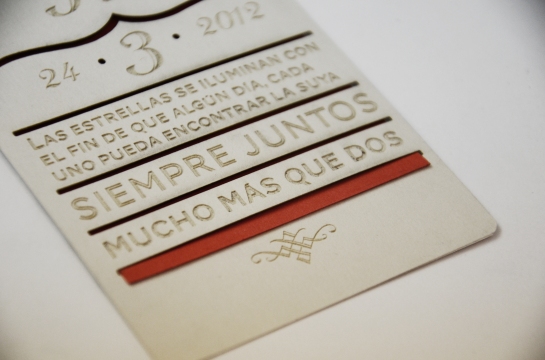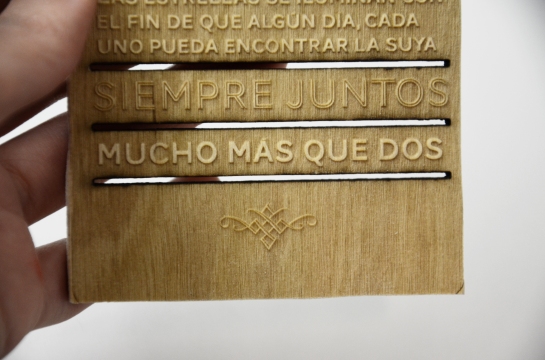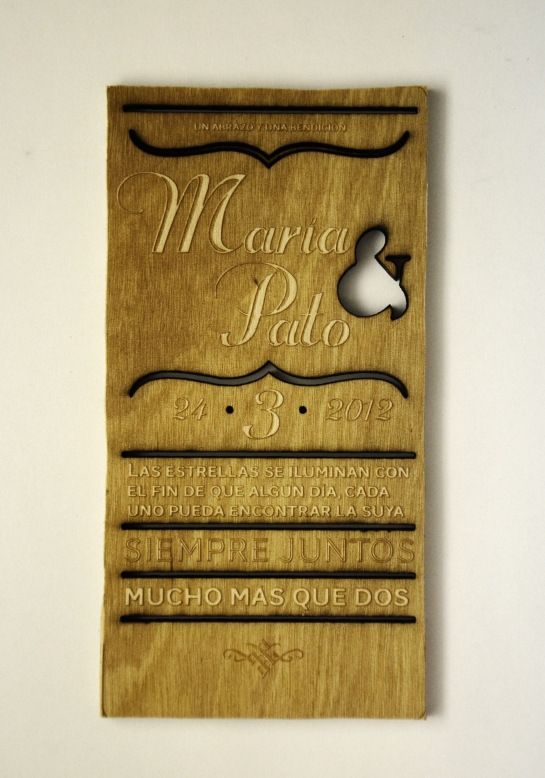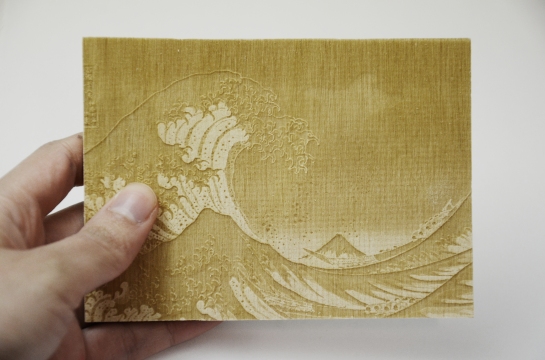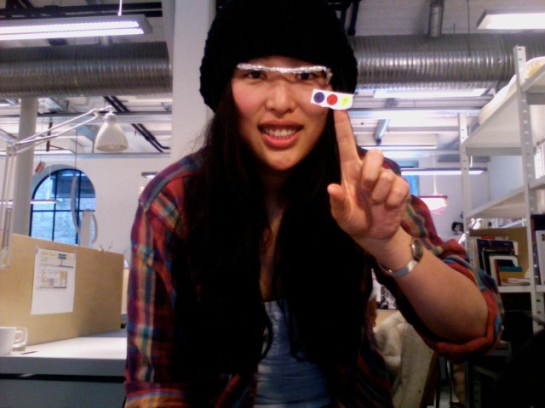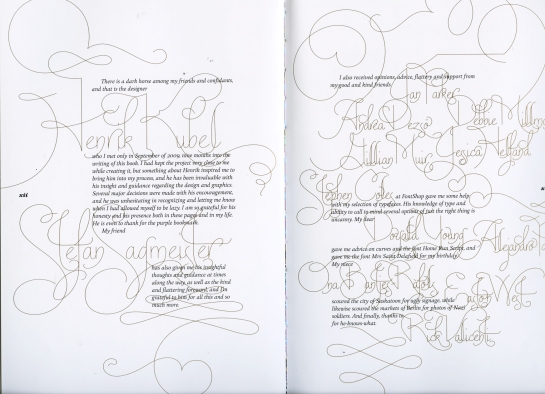__________________________________________________________________________________________
Monthly Archives: April 2012
Norwegian Wood
Exploring Tactility
In the week that I experimented with the laser-cutter at school, I decided to make something for my good friend and old flatmate Pato, who got married a month ago. Being unable to attend the ceremony back in Mexico, I chose to do something that they could touch and smell and that represented the love and vows he and his wife took. This wedding badge is an expression of my thoughts, wishes and the date when they got married. The pieces were enhanced by the wood and its tactility; it even translates on a thin piece of paper! Also, the dash of colour added a vibrant accent.
I got inspired and experimented with textures and images too!
__________________________________________________________________________________________
__________________________________________________________________________________________
An attempt in balsa wood, and a splash of orange.
__________________________________________________________________________________________
__________________________________________________________________________________________
Part of the process: my cardboard “protection” that went under the wood while cutting it with the laser-cutter.
__________________________________________________________________________________________
__________________________________________________________________________________________
Project Cardboard
I know I’ve been talking a lot about these new cool Augmented Reality glasses Google’s Project Glass demoed recently. Even the Book of the Week (The End of Hardware) reflected the hands-free, future-is-now approach. And of course, I couldn’t help but share it with friends.
I made a very “quick and dirty” prototyping experiment: create these glasses (cardboard technology would do for now) and experiment what it would be like to have them on, all the time, and receive these kind of input, randomly: a Google map appearing when you say the words “Show me Google maps”, or icons of the weather or your social media apps to share the picture you just took by blinking.
The lovely XueTing and the ever-friendly Haozhen Qi helped me try it out. It was very interesting to hear what they said after watching the video/demo and trying on the “glasses”.
XueTing:
“It is actually how the smart phones work. And functions work like this, but now it becomes part of you. Like the machine and you come together”.
Qi:
“I really want one!”
The discussion went on:
XT: “Maybe the next step is to put it as part of your body, of your brain. You don’t need anything additional anymore. In the video, I could see how its helpful to live your life. You can record a special moment, and still meet friends physically. It shows that it is easy, but I think they show this so people can adopt this new concept, but actually we will rely on this very much. But every new technology has had its advantage and disadvantage”.
Qi: “Do you have to say the orders, or could it read your mind? I think new illegal things will appear. With technology people become lovely and more lovely towards it, but this can help share, and have new relationships with others”.
I found very interesting that it comes down to decisions, and control:
XT: “Actually you have your thoughts (you talk to yourself). The link between the brain and the body is language. Before, we linked our thoughts talking to ourselves. Now, we have this. It is good when it’s still you that makes the decision. Instead of having a servant, having a master: it shouldn’t be like this. I’m curious, but it could be scary”.
__________________________________________________________________________________________
__________________________________________________________________________________________
Book of the Week: The End of Hardware
The End of Hardware
They say “don’t judge a book by its cover” and I think that in this case, it rang true. Aside from the Clip-Art graphics on the cover, The End of Hardware, by Rolf R. Hainich talks about what a few years from now was in the edge of product development or user interface and now, 3 years later (it was published in 2009), has become a reality: virtual objects and new approaches to augmented reality.
The End of Hardware states that exactly: no more big tablets or clunky laptops to experience an augmented or virtual space. Rather, that space is perceived through our eyes (and other senses) seamlessly. I finished reading this book just as I saw Google’s Project Glass video. The future is now, at least, as Hainich predicted! Google’s Project Glass video/demo, gives us a glimpse into the life of what Hainich would refer to as “four-eyed”: someone that has Augmented Reality glasses on, (he calls them vision simulators) and experiences life with different layers of data input (some virtual, some real), hands free.
The End of Hardware goes on to talk about the implications of this technology and usages. Here is where I got really engaged: how we have to approach design and interaction in a different way, and if this is really purposeful or not:
“We will have to envision entirely new applications and usage habits. It’s a new world to explore.”
Book of the Week: I Wonder
I Wonder
I happened to see this wonderful book by Marian Bantjes on a bookshop as well as on the school’s library and it immediately caught my attention. I didn’t know what it was about, I didn’t even read the title, but I was drawn to how it felt like. It murmured touch me, hug me, in a way few objects do nowadays. It is very tactile, both in a visual way and to the hand’s touch. Covered in silver and gold foil, with an intricate pattern, and a bright purple bookmark, I had to open it.
Inside, every spread is carefully designed by the author: she illustrates each detail, sets the type precisely where it should be (and even designs it herself) and the content of each story, each chapter has a lot of heart.
Marian Bantjes created this book with love and care, and it shows in the stories she tells, choosing content and container in a way that makes sense, that goes hand in hand and that potentializes the other. Every chapter/story looks different, as the content is quite different itself.
As she says : “some of the articles were originally published as blog posts for the now-archived blog Speak Up, but they have been resurrected, edited, rewritten and given new life in these pages”.
Marian talks about the sense of wonder, about ornamentation, secrets, the stars and constellations, honour, Santa as a brand, and her own mother. The layout is a visual feast, and the format of the book suitable to hold and read, to go back and forth through the pages, very inviting to touch. Also, throughout the book she manages to place quotations relevant to the chapters.
To Wonder is to be Human
Some thoughts that I considered touching and interesting are:
Essence and Memories
“The things that people make and touch and own often seem to hold an inexplicable essence of the person, and these items are cherished out of proportion to their actual, useful or aesthetic value. Smell, touch and sight combine to form powerful memories, and these sentimental objects are often sequestered from the everyday in order to preserve and honour the memory they embody”
The Return to the Source is Invaluable
“No digital archive, photo, print, copy or facsimile will hold the power of an original artifact possessed by the person it is connected to. This is the reason we have museums and archives, because the return to the source is invaluable.”
Immortality is the human in others
“Memory is what keeps us in place, in time. But our ability to shape and construct the past takes many forms, and those who take it on have great power in what we project to the future. Images of people are always so compelling for what we recognize and what we seek to recognize. They’re so much more than an image of a thing or a place because we’re able to project ourselves and our understanding of what it is to be human into them. When we look at a picture of someone and think about them as a person, we bring them to life. This is perhaps the closest to immortality that we will ever get.”
Books that hold stories that are relevant, question us, that are close to the heart and that are impeccably designed are hard to find. This one is a keeper.
I Wonder’s site here.
__________________________________________________________________________________________
__________________________________________________________________________________________
The End of Hardware
As Rolf R. Hainich predicted in his book The End of Hardware (my review of the same coming soon), one day we will no longer need a computer, or a tablet, or a screen to augment our reality, to enhance what we see (use apps, for instance) or to connect with others.
Well, that day has come. Google’s Project Glass has given us a hands-free interface: a Terminator vision in the form of Augmented Reality Glasses.
It is a concept that has been coming for a long time, and that first hand, looks pretty cool. However, I can’t help but wonder that perhaps, now, we will look at someone and pretend to follow a conversation when in truth our attention is at our dashboard in our eye’s periphery. And, do we really just talk to ourselves in the future, like this demo shows?
Which brings me to this TED talk by Sherry Turkle, author of Alone together: why we expect more from technology and less by each other.
The key here is self-reflection, and to use technology to become better people.
Exciting times, nonetheless.
Sherry’s TED Talk here:
sherry_turkle_alone_together.html
__________________________________________________________________________________________




